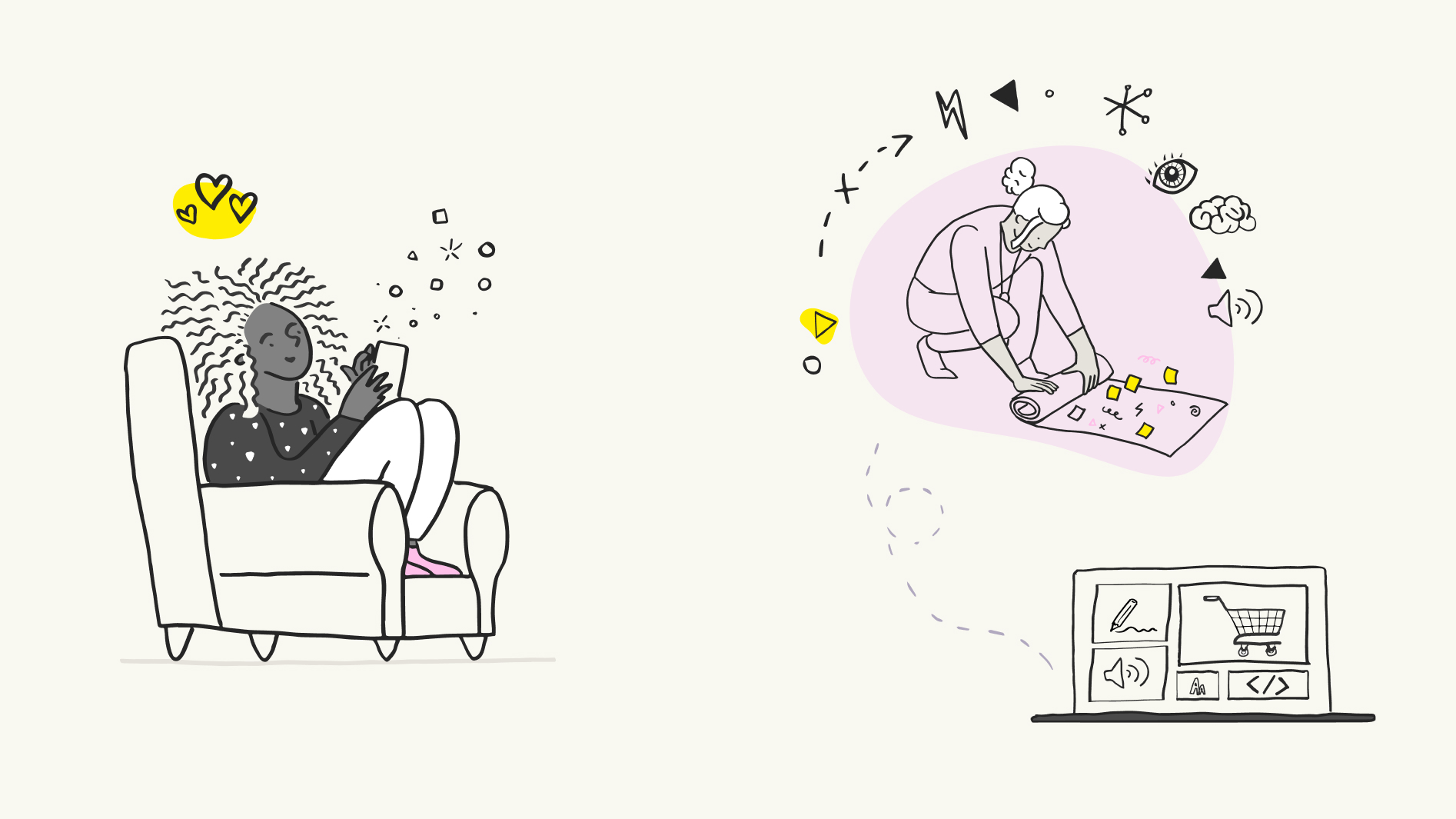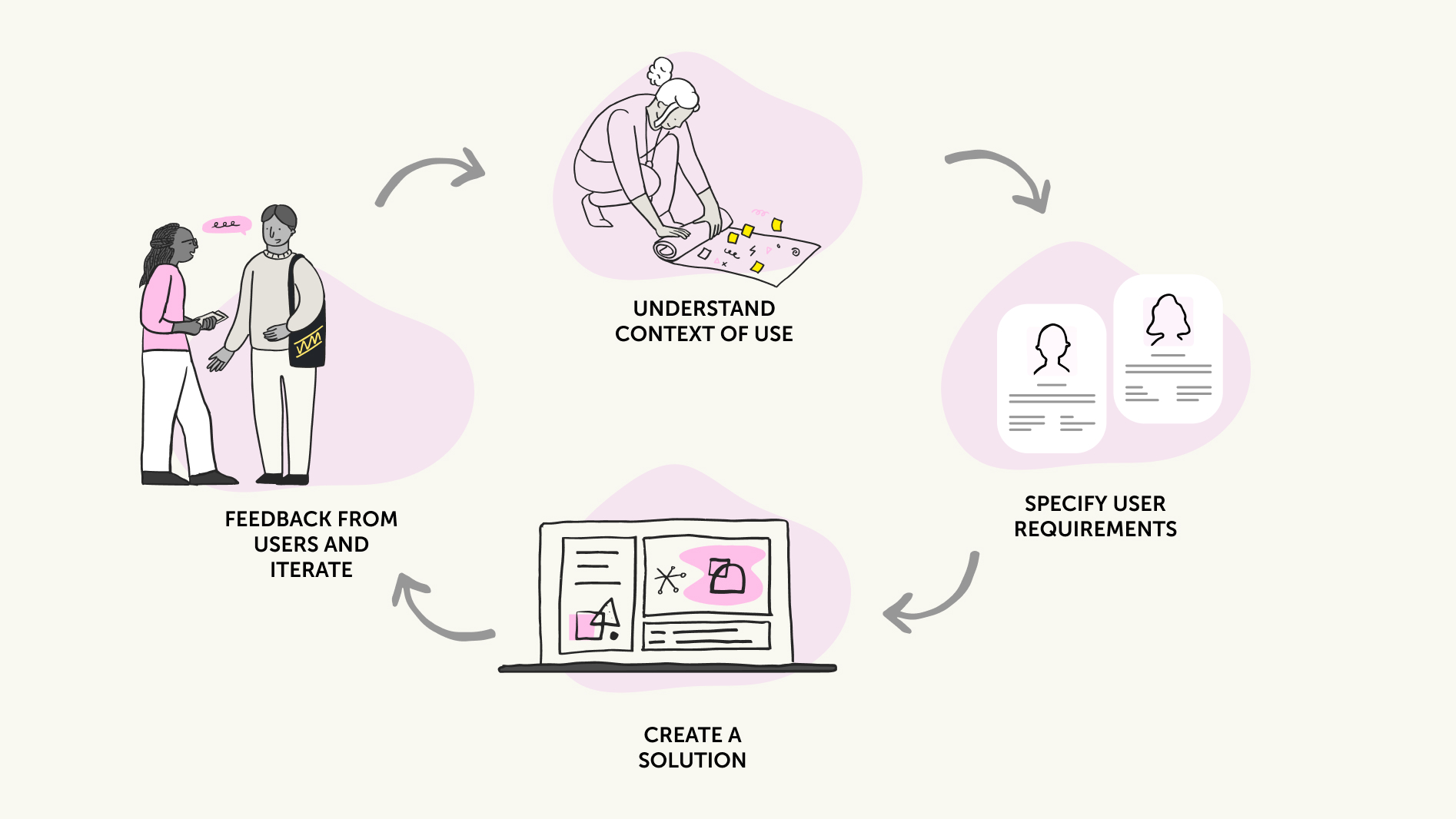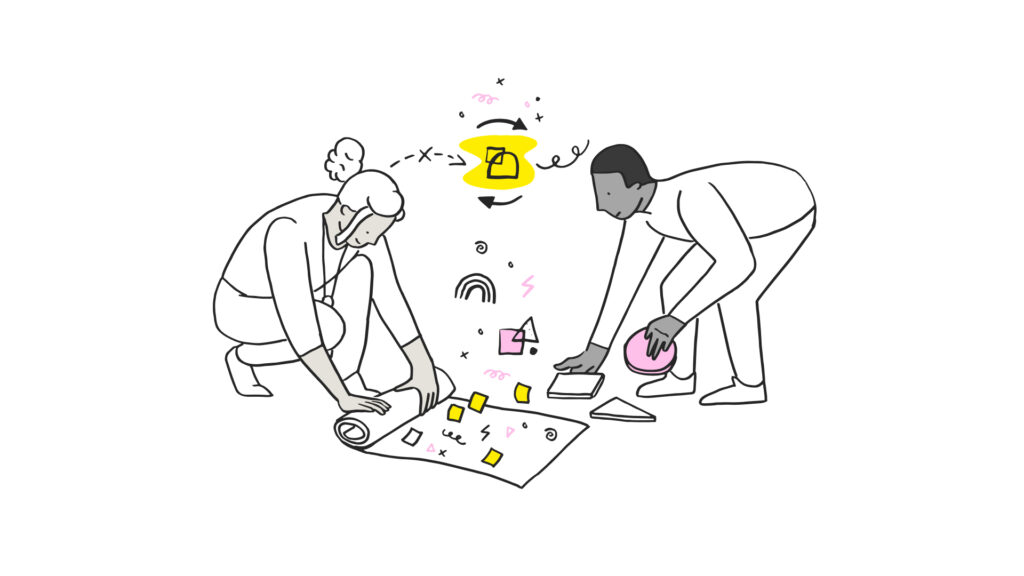
When you start to learn about the ever-growing discipline that is User experience (UX). It’s easy to meticulously bookmarked every resource that promised to shed light on the various subfields within it. The can strategy can be pretty simple: group together similar-sounding names, assuming they shared enough commonalities to make learning more efficient. Clever, right? Well, not quite.
You’d be forgiven for assuming that Service Design and UX Design are closely related—after all, they both involve the term ‘design.’ Isn’t Service Design just a part of UX? It’s a reasonable assumption, but the reality is more nuanced. While these disciplines intersect in some ways, they are fundamentally different.
Service design
Service design operates at a higher level, allowing us to examine complex interactions across an entire service. It considers the needs of those interacting with and using the service (often called the frontstage), as well as associated employees and processes that help the service run (the backstage). This holistic lens enables us to improve that service to better meet user and organisational goals.
It’s a higher level. Service design allows us to look at the complex interactions that exist right across a service, both internal and external.
Image credit: Miro Service blueprint example
Let’s go into an example, such as booking a table at a restaurant: Service Design would consider the entire process, from visiting the website, checking the restaurant’s location and parking, to making a phone call for reservations. It also includes understanding the workload and stress on staff managing these bookings.
Service design is closely associated with government services, which often require a Service Designer role as part of their agile team make-up. However, as you’d expect, service design has applications beyond the public sector, and is relevant to any kind of service you can imagine.
UX design
UX design is the process encompassing the entirety of a user journey that design teams use to create meaningful products that will provide pleasant, relevant experiences to users.
Commonly this will be incorporated as part of a process called Design thinking. Where designs and concepts will be researched and iterated upon as part of a continuous process with the aim of solving a problem.
You’ll find that the definition of a ‘UX designer’ definition will vary on a company and industry basis. However, generally, a UX designer’s process more or less follows this formula:
- Interpret user research,
- Make design decisions,
- Apply a visual language.
The ‘visual language’ part of the process is often based on brand elements or guidelines that are given by organisations to work with — i.e. designers will choose a button style and a font colour, a type hierarchy and a set of icons.
As an example, when designing for the UK government, a designer must follow the Government’s Design System. This will express not only what colours, but what components to use and what a page should look like to ensure brand consistency and accessibility.
One consistency, throughout every organisation is that a UX designer will always advocate for the user, in all their designs and decisions.
Below is a rough approximation of what that process looks like.

Let’s expand on the previous example of booking a table at the restaurant. Where Service Design considers what steps users will take, UX Design now considers, how people will interact with individual elements within that process.
For example, how will people interact with the booking form, via mobile or desktop? Where will users be located when they access the form? What does the form need to do to get users to complete it? What brand/design guidelines does this form need to follow? How will information be displayed to internal staff? What are their requirements?
All of these and more questions are thought about, and answered by a UX designer. Sometimes, there will be a team of people supporting to answer these, such as a Researcher or a Business Analyst.
Informed by this, a UX designer will then create a draft solution, which, in an ideal world will be put in front of users for feedback and iterated on.
The feedback and iteration phase is a crucial part of the process. It allows a UX designer to assess whether they’ve met all user requirements and identify if anything can be improved on.
This iteration process can be repeated almost infinitesimally, so it’s key to establish in advance how many rounds of feedback and iteration are right for your product, considering budgetary and time restrictions. Always remember that the system should have time to be iterated upon in the future.
So what’s the value of UX design?
From a user perspective, UX design’s primary goal is to enable users to live their lives as effortlessly as possible.
By practising inclusive design as a standard, UX designers can play a pivotal role in ensuring that services and products remain accessible to the widest groups of users possible.
From a business perspective, good UX design has been shown to improve customer satisfaction and brand loyalty.
A report by McKinsey in 2018, reviewing 300 businesses across 5 years from numerous industries found that design-led companies were far more likely than their counterparts to increase their revenues and return value to shareholders.
“Good design is good business”
Thomas Watson Jr., CEO, IBM
Service design vs UX design
So, what have we learned here?
Firstly, if go back to your younger self, and tell yourself “Just because two titles sound fairly similar, doesn’t mean that they’re related”.
Secondly, UX design and Service design don’t really compete against each other. Rather, they complement each other at differing stages in the development process, with each incorporating very different skill sets.
In theory, Service design should happen before the UX design stage however, it’s not uncommon for this to be reversed as organisations can get excited about solutionising a ‘perfect’ product before considering how it fits in with their wider service.
When UX and Service design aren’t implemented efficiently, this can lead to broken experiences. Below is an example of where this ‘handshake’ between UX and Service design has gone wrong.
Imagine, if you will, you book tickets to your favourite band. Sure the tickets are a bit pricey but hey, you only live once right?
You excitedly order the tickets and that rush of excitement hits. You’re going.
You wait for the ‘ding’ notification from your email that tells you they’ve arrived but, weirdly, no ding.
You look at your email to check what’s happened and as you open the application on your phone, the dreaded ‘please type in your password’ appears. You type it in, an edge of annoyance creeping in. Calamity. Wrong password. You’re convinced it’s right, but after trying multiple variations, the system remains as stubborn as a brick wall.
You try to reset your password, but the 2 factor authentication is linked to an old mobile number. You’ll have to contact support directly.
Begrudgingly, you make your way to their site, always in the back of your mind with what’s at stake. You select the ‘forgot password’ option. An option to call someone appears. Great, maybe this day will turn around? The sun magically lit up the room, filling it with cautious optimism.
How does it light up a room with no windows? Why is light associated with hope? Questions you don’t think about as you’re focused solely on getting that password reset to get your tickets.
You click the ‘call’ option. Your heart sinks.
‘Sign in with your ID’.
Almost as quickly as it appeared, your hope is dashed. Mockingly cut off from support about resetting your password…as you don’t know your password.
You sigh in exasperated defeat. Time to go through Eventbrite’s support system…
This example is based on an experience I had personally with Apple, which, after 5 months, at the time of writing, is still live on their site.
When organisations skip steps in the user-centred process, simple errors can start appearing.
Most frustratingly, they can be left live for months, even years at a time as no one may be responsible for the part of the journey affected.
It impacts customer satisfaction and brand trust.

So as we can see, both have their values, Service design brings clarity and structure in helping to decide how a service can be iterated on at a strategic level. UX Design supports users accessing that service or product.
Summary
If you’re interested in reading more about service design or UX design. Here are some additional resources which go into greater depth than what’s been written here.
What is User Experience Design – Design Interaction Design Foundation: https://www.interaction-design.org/literature/topics/ux-design
7 fundamental. UX design principles all designers should know – UX Design Institute: https://www.uxdesigninstitute.com/blog/ux-design-principles/
What is Service Design – Design Interaction Design Foundation: https://www.interaction-design.org/literature/topics/service-design
Service Design 101 – Nielsen Norman group: https://www.nngroup.com/articles/service-design-101/
Let’s work together
Did our blog inspire you to re-look at your practices. UX and Service Design services help provide coherence and coordination across your digital projects and products. Get in touch to find out how we can help, contact us today!
We drive commercial value for our clients by creating experiences that engage and delight the people they touch.
Email us:
hello@nomensa.com
Call us:
+44 (0) 117 929 7333




